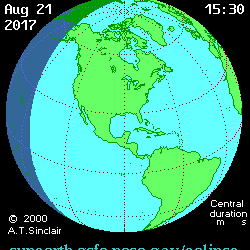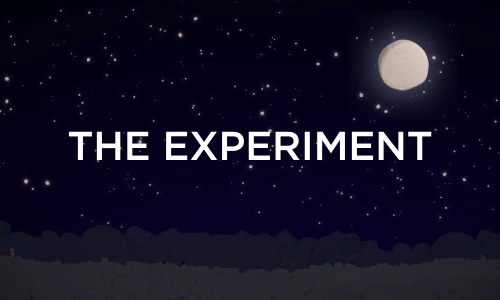Photo


Gravity Falls sure knows its fan base
22K notes
·
View notes
Photo

Chaos Theory.
Chaos is the science of surprises, of the nonlinear and the unpredictable. It teaches us to expect the unexpected. While most traditional science deals with supposedly predictable phenomena like gravity, electricity, or chemical reactions, Chaos Theory deals with nonlinear things that are effectively impossible to predict or control, like turbulence, weather, the stock market, our brain states, and so on. These phenomena are often described by Fractal Mathematics, which captures the Infinite Complexity of Nature. Many natural objects exhibit Fractal Properties, including landscapes, clouds, trees, organs, rivers etc, and many of the systems in which we live exhibit Complex, Chaotic behavior. Recognizing the Chaotic, Fractal Nature of our world can give us new insight, power, and wisdom.
Principles of Chaos
The Butterfly Effect: This effect grants the power to cause a hurricane in China to a butterfly flapping its wings in New Mexico. It may take a very long time, but the connection is real. If the butterfly had not flapped its wings at just the right point in space/time, the hurricane would not have happened. A more rigorous way to express this is that small changes in the initial conditions lead to drastic changes in the results. Our lives are an ongoing demonstration of this principle.
Unpredictability: Because we can never know all the initial conditions of a complex system in sufficient (i.e. perfect) detail, we cannot hope to predict the ultimate fate of a complex system. Even slight errors in measuring the state of a system will be amplified dramatically, rendering any prediction useless. Since it is impossible to measure the effects of all the butterflies (etc) in the world, accurate long-range weather prediction will always remain impossible.
Order / Disorder: Chaos is not simply disorder. Chaos explores the transitions between order and disorder, which often occur in surprising ways.
Mixing: Turbulence ensures that two adjacent points in a complex system will eventually end up in very different positions after some time has elapsed.
Fractals: A fractal is a never-ending pattern. Fractals are infinitely complex patterns that are self-similar across different scales. They are created by repeating a simple process over and over in an ongoing feedback loop. Driven by recursion, fractals are images of dynamic systems – the pictures of Chaos. Geometrically, they exist in between our familiar dimensions. Fractal patterns are extremely familiar, since nature is full of fractals. For instance: trees, rivers, coastlines, mountains, clouds, seashells, hurricanes, etc.
6K notes
·
View notes
Text
the nerd i reblogged this from has a quality blog & i recommend you all follow them.
1M notes
·
View notes
Photo

Behold! The best picture of Pluto you have ever seen. It was taken yesterday by the New Horizons space probe.
Here’s my video poem celebrating the New Horizons mission!
And here’s a 1 MINUTE summary of the space probe’s journey.
7K notes
·
View notes
Video
some days its worth going on 4chan and wading through the garbage for gems like this
386K notes
·
View notes
Photo

Scientist Proposes That Black Holes are Harmless Holograms
Whaaatttttt??!!!
“Samir Mathur, professor of physics at The Ohio State University and black hole sympathizer, thinks that black holes aren’t the ruthless, all-consuming mega-behemoths that we’ve made them out to be”
“Around ten years ago, Mathur proposed the “fuzzball theory” to describe black holes. The fuzzball theory defies the classic description of a black hole, whereby an enormous ball of matter gravitationally attracts itself so strongly that it gets smaller and smaller, until eventually all that mass encompasses a single point. In other words, a singularity”
“The fuzzball theory instead is derived from string theory and suggests that black holes are actually spheres, made up of cosmic strings, with a definite volume and not a single point in space. The event horizon, or edge, of the black hole wouldn’t be exactly defined. Instead, it would be “fuzzy”. Like a fuzzball.”
“But when a group of researchers played around with this theory, it turned out that they were actually playing with fire. They created a theory responsible for black holes’ destructive reputation called the “firewall theory.” It suggests that anything that tries to cross the event horizon will encounter a flaming wall of high-energy obliteration. Nothing can pass through. All will be incinerated. You can see why black holes suffered a bit of a negative reputation after this theory came to light.”
“Fortunately for black holes everywhere, Mathur and his team have also been toying with the fuzzball theory, and their results (found on arxiv) disagree with the firewall theory. Instead of a fiery ball of destruction, they say that black holes are more like galactic copy machines. Black holes create near-perfect holograms of anything that touches their surface.”
Fascinating! :D
92 notes
·
View notes
Audio
I took a shot at orchestral music with just strings.
1 note
·
View note
Video
944K notes
·
View notes
Photo

The path of the total solar eclipse that will be happening on August 21st, 2017.
349 notes
·
View notes
Quote
It’s sort of like a pop tour. What happens on tour stays on tour. I guess that makes pop tours a vector space.
Differential equations professor
(via mathprofessorquotes)
199 notes
·
View notes
Photo







Scientists have been chasing the speed of light for centuries. Galileo tried to find it with flashing lanterns. Fizeau tried (and came pretty close) with a toothed wheel. And I just tried to calculate it with peeps and a microwave. Learn about all the experiments in THIS VIDEO!
2K notes
·
View notes
Audio
I decided to dabble in techno a bit
1 note
·
View note


